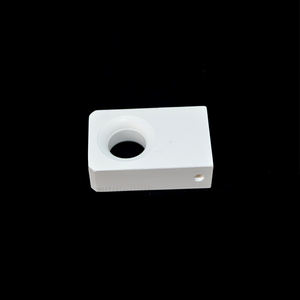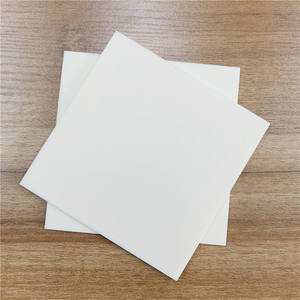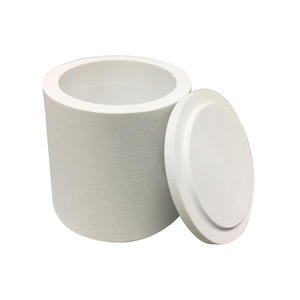Professional industry ceramic supplier, silicon nitride, silicon carbide, aluminum nitride and any other kinds of ceramics.
PRODUCT PARAMETERS
Description
Overview of Used to Sinter Phosphor Bn Assembled Parts Boron Nitride Ceramic
Used to Sinter Phosphor Bn Assembled Parts Boron Nitride Ceramic ceramics are a class of advanced technical ceramics, often referred to as “white graphite.” They are renowned for their unique combination of properties, including high thermal conductivity, excellent electrical insulation, and outstanding thermal shock resistance. Available in various forms such as hot-pressed solids, coatings, and composites, BN ceramics are critical in demanding applications across aerospace, electronics, and metallurgical industries.
Features of Used to Sinter Phosphor Bn Assembled Parts Boron Nitride Ceramic
-
High Thermal Conductivity: Offers excellent heat dissipation, similar to metals, while maintaining electrical insulation.
-
Excellent Thermal Shock Resistance: Withstands extreme and rapid temperature changes without cracking.
-
Superior Electrical Insulation: Maintains high resistivity even at elevated temperatures.
-
Low Dielectric Constant and Loss: Ideal for high-frequency and microwave applications.
-
Good Chemical Inertness: Resists attack from most molten metals, slags, and salts.
-
Non-wetting and Non-reactive: With many molten metals like aluminum and copper.
-
High Temperature Stability: Can be used in inert or vacuum atmospheres up to 3000°C.
-
Machinability: Can be precision-machined into complex shapes using conventional tools, unlike many other advanced ceramics.
Specifications of Used to Sinter Phosphor Bn Assembled Parts Boron Nitride Ceramic
Boron nitride ceramic parts exist here. These parts previously sintered phosphor materials. They are assembled now. This means multiple pieces fit together. The material is hot pressed boron nitride. This ceramic is very pure. Impurity levels stay low. This matters for performance. Thermal stability is a key feature. These parts handle extreme heat. Continuous use temperatures reach 1800°C. Short bursts tolerate much higher heat. Thermal shock resistance is excellent. Sudden temperature changes cause little damage. This is vital for sintering processes.
Electrical insulation is another strength. Boron nitride resists electricity even at high heat. This prevents unwanted currents. Chemical inertness is significant. The ceramic resists attack from many molten materials. This includes metals and salts. It doesn’t wet easily either. This protects the parts. Mechanical properties are adequate. The hardness is moderate. Machining is possible before final sintering. Density is typically low for a ceramic. This makes the parts relatively light. Specific values depend on the grade used.
Surface finish is generally smooth. This minimizes sticking issues. Some porosity might be present. This is normal for this material. Exact surface roughness varies. Dimensions are precise. Tolerances are tight for assembly. Each piece fits correctly with others. The shape depends on the furnace design. Common forms include plates, setters, boats, and complex shapes. Color is usually white or off-white. Visual inspection for cracks is essential. Minor wear might be visible. These parts are reusable. Their condition depends on prior use history.
Applications of Used to Sinter Phosphor Bn Assembled Parts Boron Nitride Ceramic
Used sintered phosphor BN assembled parts are boron nitride ceramic components. They are made by pressing and heating boron nitride powder. This process is called sintering. Sintering bonds the powder particles together tightly. It creates a solid, strong ceramic piece. These parts handle extreme heat very well. They stay stable at temperatures over 2000°C. This makes them perfect for very hot environments. They resist chemical attack strongly too. Acids and molten metals don’t damage them easily. Boron nitride is also an electrical insulator. It doesn’t conduct electricity. This is important for many electrical uses. Another key property is low thermal expansion. The parts don’t change size much when heated or cooled. This prevents cracking under sudden temperature changes.
These ceramic parts are machined after sintering. Manufacturers shape them into precise forms. They make complex assemblies possible. Common shapes include crucibles, tubes, and plates. Insulators and nozzles are also frequent. The parts often join together in larger systems. This creates custom thermal management solutions.
The main uses are in demanding industries. Semiconductor manufacturing relies on them heavily. They hold molten silicon and other materials safely. They provide clean, non-contaminating surfaces. Metal processing uses them too. They line furnaces and handle molten metals. Aerospace applications benefit from their heat resistance. They work in rocket engines and high-speed flight components. Nuclear energy uses them as neutron absorbers. They help control reactor processes. The electronics industry values their insulation properties. They isolate high-voltage components effectively. Laboratory equipment often incorporates them. They are essential for high-temperature experiments.
Company Profile
Tanki New Materials Co.Ltd. focus on the research and development, production and sales of ceramic products, serving the electronics, ceramics, chemical and other industries. Since its establishment in 2015, the company has been committed to providing customers with the best products and services, and has become a leader in the industry through continuous technological innovation and strict quality management.
Our products includes but not limited to Aerogel, Aluminum Nitride, Aluminum Oxide, Boron Carbide, Boron Nitride, Ceramic Crucible, Ceramic Fiber, Quartz Product, Refractory Material, Silicon Carbide, Silicon Nitride, ect. please feel free to contact us.

Payment Methods
T/T, Western Union, Paypal, Credit Card etc.
Shipment Methods
By air, by sea, by express, as customers request.
5 FAQs of Used to Sinter Phosphor Bn Assembled Parts Boron Nitride Ceramic
What exactly are these boron nitride ceramic parts for?
They’re used to sinter phosphor assemblies. Sintering bonds powder materials using heat. These parts hold the phosphor assemblies during the high-temperature process. They ensure the assemblies hold their shape perfectly.
Why choose boron nitride over other materials?
Boron nitride handles heat incredibly well. It withstands very high sintering temperatures without damage. It also releases parts easily after sintering. Nothing sticks to it. This prevents contamination of the sensitive phosphor materials. Other materials often stick or leave residues.
Are these parts fragile? How should we handle them?
Yes, they are a ceramic. Handle them carefully. Avoid impacts or dropping them. Don’t subject them to sudden temperature changes. Thermal shock can crack them. Follow the manufacturer’s handling instructions closely. Proper care makes them last much longer.
What specific phosphor sintering uses these parts?
They are common in making LED components. Think about the white powder inside LED packages. That phosphor needs precise sintering. They are also used for other advanced phosphors in lighting and displays. Any application needing pure, high-temperature processing benefits.
How do we maintain these boron nitride parts?
Clean them after every use. Remove any loose powder residue gently. Use compressed air or a soft brush. Avoid harsh chemicals or abrasive cleaners. Inspect parts regularly for chips or cracks. Damaged parts should be replaced immediately to prevent issues. Store them securely when not in use.
REQUEST A QUOTE
RELATED PRODUCTS

High Purity White Boron Nitride Hbn Bn Ceramic Sheet

Toughened Boron Nitride Zirconia Composite Ceramic Tubes

Industrial Bn Machined Boron Nitride Ceramic Parts

Customized High Hardness Boron Nitride Ceramic Composite Bn Nozzle

High Thermal Conductivity Precision Threaded Boron Nitride Ceramic Tube Bushing



